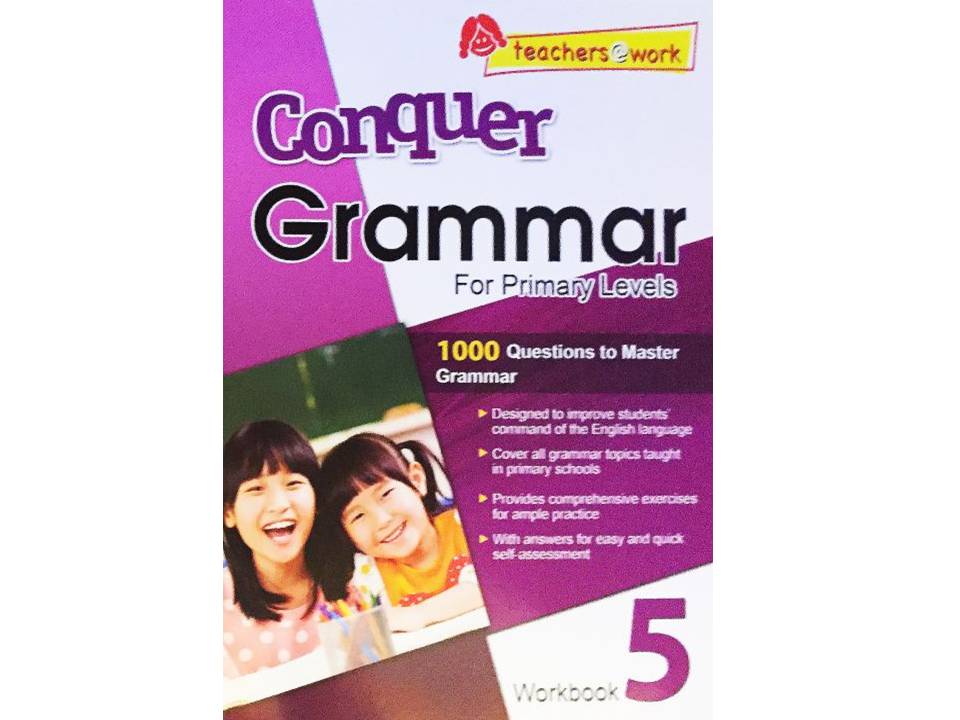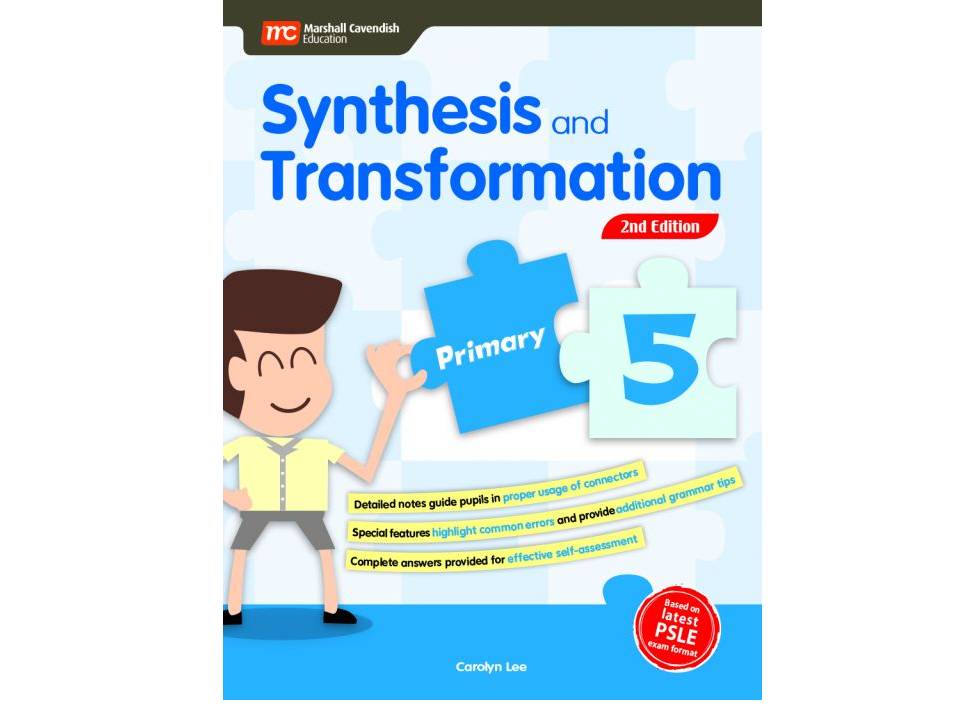At Thinking Factory, we take preparing our Primary 5 students for the English Language Paper 2 seriously. To us, this is the start of the PSLE year. If the foundation of the new, more challenging components in English is set firmly in the P5 year, the PSLE year will be a much smoother one for everyone. While we work hard here to prepare the students for their P5 year, parents at home can also get the ball rolling.
In my previous post about changes in English Language components for Primary 4 to Primary 5, I explained what changes parents can expect in their child’s Primary 5 English papers 1, 2 and oral.
In this post, I will discuss a few ways on how we, at Thinking Factory, prepare our Primary 4s as they transition to their Primary 5 year in the Primary 5 English Paper 2 components.
Grammar MCQ and grammar cloze
I use only two assessment books for my classes – a grammar MCQ book and a Synthesis and Transformation one. Depending on the batch of students, I may use both books or just one for the year.
For example, if I find that the batch of students are still unsure of their grammatical rules such as subject-verb-agreement, I will then ask them to get a grammar assessment book and we will work on that book first. My favourite grammar assessment book is Teachers @ work Conquer Grammar.

Synthesis and Transformation
For the 2020 batch, most of the Primary 5 students are from our Primary 4 classes. As we worked a lot on grammar in their Primary 4 year, I feel that we can start to work on Synthesis and Transformation (S&T) rules immediately in November this year. This is one section of the Primary 5 Paper 2 that requires time, a good memory and lots of practice. Thus, the earlier I am able to start off my Primary 5 batch on S&T , the better. I like to use the Marshall and Cavendish Synthesis and Transformation assessment book. Explanations are clear and the rules are neatly laid out in tables. A great tool for revision before the SA1 and SA2. It is also good to have this book on hand when doing S&T practices at home.

Vocabulary
For the Vocabulary sections in Booklet A, students are encouraged to read more extensively and use a dictionary if they come across words that are difficult. Aside from this, students are given a Vocabulary List every term. This list contains a compilation of challenging vocabulary words and their meanings taken from the Top School Papers. Students are tested by writing out sentences for the words given. This list is easy to compile at home. All you need is a dictionary and a set (2019 for 2020 students) of Top School Papers.
Vocabulary Cloze (Comprehension Cloze)
This component is one of the trickiest in Paper 2. Knowing what to fill in (phrasal verbs, verbs, a conjunction etc) the 15 blanks require practice and understanding. I usually use the intensives in December to teach (P5 batch) and revise with (the P6 batch) on how to identify what is needed to fill in the blanks.
I do not use an assessment book for practice. I usually compile past years’ Top School Vocabulary Cloze passages and put them in a mini-booklet for my students. I find that those Vocabulary Cloze passages are set better than any assessment book. Being an ex-primary school teacher, I know the process of setting an English examination paper. It requires peer vetting, revision and final vetting before any component is finalised.
Editing
This section of Paper 2 is broken up into 6 grammatical mistakes and 6 spelling mistakes. Students seem to lose the most marks when correcting the spelling mistakes. At Thinking Factory, we always start off our P5 year with a list of 35 Commonly misspelled words.
We, then follow with a list of Editing words every term. I will test these words as spelling weekly.
Once again, these words are taken from the Editing section of the Top School papers and can be easily compiled at home.
Comprehension Open-ended
This section is a major leap for Primary 4 students. Texts are now longer, denser and even confusing for some. Questions are longer and more complex, requiring different skills such as inferring and organising. This can put off a student whose strength isn’t in English Language.
In the beginning, I guide my Primary 5 classes closely in this section of Paper 2. I take the time to break down the passage with the students and to identify question types. This can take months.
When I feel that they have built up their confidence to tackle this section of the paper, Comprehension OE becomes almost a weekly test in my upper primary classes. Over the years, I have found this to be the best method in training my P5s and P6s to tackle this component. Often, my students keep their scores of 15 and above for every examination.
I hope that these tips are useful if you are preparing for the Primary 5 year. In my next post, I will discuss about the English writing component in Primary 5.
Check the other articles from this section
- How to ace the Cloze passage in P5
- A number vs the number grammar rule
- Tips on Informal Situational Writing – P5
- English SA2 Revision: Ways to Tackle Comprehension OE
- P5 Key Grammatical Structures
- How to manage tricky subject-verb-agreement questions in Primary 5?
- 2023 P5 Editing List & PSLE Editing List
- Three tips to help P5 students prepare for the English Paper 2 component
- Common grammar mistakes series: subject-verb-agreement
- P5 CA1 Vocabulary List 2016
- P5 CA1 Editing List 2016
- P5 Top School SA1 Editing List 2015
- Primary 5 Vocabulary List
- Primary 5 Editing (Spelling) List
- P5 & P6 Commonly Misspelled Words
- P5 English vocabulary & editing list
- Primary 5 English Grammar Subject-verb-agreement
- Tips on Comprehension Cloze Passages for P5
Don’t Miss Any Future Post!
2024 P5 English Tuition Timetable
| Branch | Day | Time |
|---|---|---|
| Bukit Timah | MON | 3 pm to 5 pm |
| Bukit Timah | FRI | 5 pm to 7 pm |
| Bukit Timah | SAT | 11 am to 1 pm |
| Hougang | TUE | 5.30 pm to 7.30 pm |
| Hougang | SAT | 9 am to 11 am |
| Hougang | SAT | 11.30 am to 1.30 pm |
| Virtual branch* | FRI | 5 pm to 7 pm |

